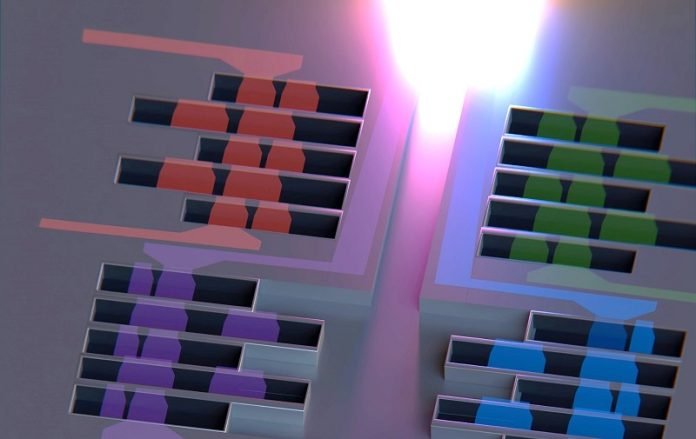
In the rapidly evolving world of technology, scientists from the University of Florida have taken a giant leap forward in improving how we send and receive vast amounts of information wirelessly.
Featured in Nature Electronics, their groundbreaking work introduces a new type of processor that could change the game for wireless communication, especially at a time when advancements in artificial intelligence (AI) are pushing the demand for data through the roof.
Until now, the backbone of wireless communication has been two-dimensional, or flat, processors.
These have served us well but are starting to show their age because they can only handle a small slice of the electromagnetic spectrum. Imagine trying to send a whole ocean of data through a narrow canal, and you’ll have an idea of the problem at hand.
Enter the University of Florida’s team, led by Dr. Roozbeh Tabrizian. They’ve developed a processor that isn’t flat but three-dimensional.
This isn’t just a step up; it’s a whole new direction—literally adding a new dimension to how processors can work.
This 3D processor technology is like upgrading from a single-story building to a skyscraper. It means more room (or in this case, bandwidth) to send data without taking up more physical space.
Dr. Tabrizian likens our current situation to a city’s traffic system. Just as roads can only handle so many cars before traffic jams occur, there’s only so much data we can send before things start to slow down.
And with the explosion of AI and devices needing to talk to each other, the digital highway is getting congested.
The solution? These 3D processors. They’re built using a method called CMOS technology, which is a fancy way of saying they’re made with the same advanced techniques that create the brains of computers and smartphones.
But instead of making chips that only work on one frequency, the team’s innovation allows for multiple frequencies to be handled on the same chip. This is like having a multi-lane highway where each lane is for a different speed, making traffic flow much smoother.
This breakthrough is significant for several reasons. First, it makes wireless communication more efficient. We’re talking about faster, more reliable connections for everything from your smartphone to the internet in your home.
Second, it opens up new possibilities for technology that relies on real-time data, like smart cities that manage traffic and energy use more effectively, remote healthcare services that can save lives, and augmented reality experiences that are more immersive.
The 3D processors also have what’s called “indefinite scalability,” meaning they can grow to meet future demands without taking up more space. This is crucial as our appetite for data shows no signs of slowing down.
In summary, what Dr. Tabrizian and his team have created isn’t just a new piece of technology. It’s a potential revolution in how we think about and use wireless communication. Their work promises a future where our devices work better, data flows freely, and the possibilities are as limitless as they are exciting.



